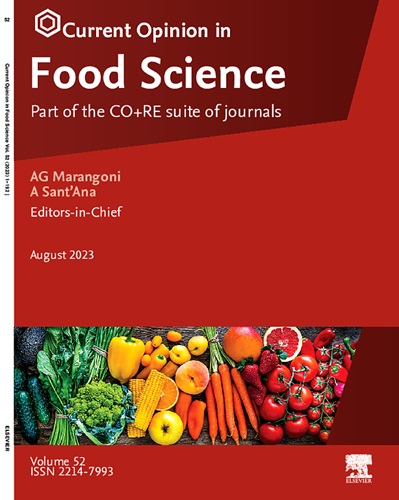Redefining innovation: the role of co-creation in collaborative new food product strategies
IF 9.1
1区 农林科学
Q1 FOOD SCIENCE & TECHNOLOGY
引用次数: 0
Abstract
The development of new food products (NFPD) is a continuously evolving activity within the food industry, driven by the high competitiveness of the sector. Traditionally, the NFPD process has been led by internal teams, guided by the perceptions of managers. However, an emerging trend, widely discussed in the literature and in other industrial sectors, has incorporated the participation of external stakeholders, such as consumers, suppliers, and service providers, through approaches known as co-creation. This practice strengthens the relationship between companies and consumers and can drive innovation in the food industry, grounded in mutually co-created values. The objective of this review was to compile and analyze information regarding the benefits, challenges, and prospects of using co-creation in the development of new food products, identifying emerging trends and gaps in the application of this approach within the sector. Overall, a low degree of maturity was observed in the application of co-creation approaches to food product development, characterized by the use of traditional techniques, such as focus groups and questionnaires. However, these techniques have been increasingly employed with a more collaborative perspective, incorporating co-creative elements. Although still in its early stages, this practice has already shown promising results and points toward significant expansion in the near future.
重新定义创新:协同新食品战略中共同创造的角色
新食品产品的开发(NFPD)是食品行业内不断发展的活动,由该行业的高竞争力驱动。传统上,NFPD过程由内部团队领导,由管理人员的看法指导。然而,在文献和其他工业部门中广泛讨论的一种新兴趋势是,通过称为共同创造的方法,将外部利益相关者(如消费者、供应商和服务提供者)的参与纳入其中。这种做法加强了公司和消费者之间的关系,并可以在共同创造价值的基础上推动食品行业的创新。本综述的目的是汇编和分析有关在新食品开发中使用共同创造的好处、挑战和前景的信息,确定该方法在该部门应用中的新趋势和差距。总的来说,在食品开发中应用共同创造方法的成熟程度较低,其特点是使用焦点小组和问卷等传统技术。然而,这些技术已经越来越多地应用于更具协作性的视角,融入了共同创造的元素。尽管仍处于早期阶段,但这种做法已经显示出可喜的结果,并指出在不久的将来会有显著的扩展。
本文章由计算机程序翻译,如有差异,请以英文原文为准。
求助全文
约1分钟内获得全文
求助全文
来源期刊

Current Opinion in Food Science
Agricultural and Biological Sciences-Food Science
CiteScore
18.40
自引率
4.00%
发文量
157
审稿时长
92 days
期刊介绍:
Current Opinion in Food Science specifically provides expert views on current advances in food science in a clear and readable format. It also evaluates the most noteworthy papers from original publications, annotated by experts.
Key Features:
Expert Views on Current Advances: Clear and readable insights from experts in the field regarding current advances in food science.
Evaluation of Noteworthy Papers: Annotated evaluations of the most interesting papers from the extensive array of original publications.
Themed Sections: The subject of food science is divided into themed sections, each reviewed once a year.
 求助内容:
求助内容: 应助结果提醒方式:
应助结果提醒方式:


